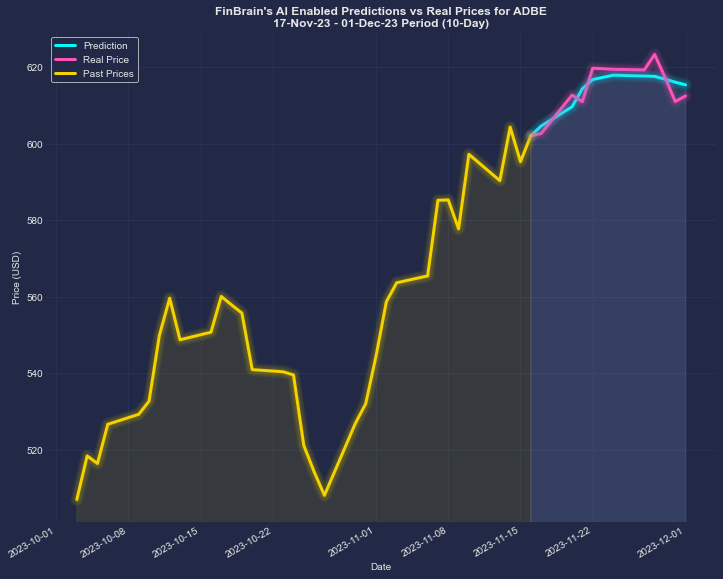Top 10 Tips On Testing Stock Trading Backtesting Using Ai From Penny Stocks To copyright
Backtesting is essential for optimizing AI strategies for trading stocks, especially on unstable markets like penny and copyright markets. Here are 10 tips on how you can get the most benefit from backtesting.
1. Backtesting What is it, and what does it do?
Tip. Be aware that backtesting can help to make better decisions by testing a particular strategy against previous data.
It is a good way to make sure your plan will work before you invest real money.
2. Use High-Quality, Historical Data
Tip – Make sure that the historical data are accurate and complete. This includes price, volume and other relevant metrics.
For Penny Stocks: Include data on delistings, splits, as well as corporate actions.
Use market-related data, like forks and half-offs.
The reason is because high-quality data gives accurate results.
3. Simulate Realistic Trading Conditions
TIP: When you backtest be aware of slippage, transaction cost, as well as spreads between bids and requests.
The reason: ignoring this aspect could lead to an unrealistic perspective on the performance.
4. Test Multiple Market Conditions
Tip: Backtest your strategy with different market scenarios, including bear, bull, and the sideways trend.
The reason is that strategies perform differently in different conditions.
5. Focus on Key Metrics
Tip Analyze metrics using the following:
Win Rate: Percentage of successful trades.
Maximum Drawdown: Largest portfolio loss during backtesting.
Sharpe Ratio: Risk-adjusted return.
Why: These metrics can help you determine the risk potential of your strategy and return.
6. Avoid Overfitting
Tips. Make sure you’re not optimizing your strategy to be in line with previous data.
Tests on data not utilized in optimization (data that was not included in the test sample).
Utilizing simple, reliable models instead of more complex.
Why is this: Overfitting leads to poor real-world performance.
7. Include Transaction Latency
Simulate the duration between signal generation (signal generation) and trade execution.
Take into account network congestion and exchange latency when calculating copyright.
What’s the reason? In a fast-moving market the issue of latency can be a problem in the entry and exit process.
8. Test Walk-Forward
Divide the historical data into several time periods
Training Period – Maximize the training strategy
Testing Period: Evaluate performance.
Why: The method allows to adapt the method to different times of the day.
9. Combine Backtesting with Forward Testing
TIP: Test strategies that have been tested back using a demo or an environment that simulates.
This will enable you to verify that your strategy is working according to your expectations given the current market conditions.
10. Document and Iterate
Tips: Make detailed notes of backtesting assumptions, parameters and results.
Why is it important to document? It helps refine strategies with time and helps identify patterns in what works.
Bonus How to Utilize Backtesting Tool efficiently
Tip: Leverage platforms like QuantConnect, Backtrader, or MetaTrader for automated and reliable backtesting.
Why? The use of sophisticated tools can reduce manual errors and streamlines the process.
These tips will help you to ensure you are ensuring that you are ensuring that your AI trading plan is optimised and tested for penny stocks as well as copyright markets. Read the most popular ai predictor url for site recommendations including ai trading platform, ai stock trading app, using ai to trade stocks, best ai for stock trading, copyright ai trading, best ai stocks, ai financial advisor, ai investing platform, stock ai, coincheckup and more.

Top 10 Tips To Regularly Update And Optimize Models To Ai Stocks, Stock Pickers And Investments
For accuracy, ad-hoc adaptation to market trends and better performance, it is essential that AI models are constantly updated and optimized. Your AI models must evolve to match the market. Here are 10 tips to help you improve and improve your AI models.
1. Continuously incorporate fresh market data
Tip: Incorporate the most recent market information regularly including earnings, stock prices macroeconomic indicators, as well as social sentiment. This will ensure that your AI models are relevant and reflect current market conditions.
AI models are old without updated data. Regular updates ensure that your model is up-to-date with market patterns and improve accuracy in prediction.
2. Monitor Model Performance In Real-Time
A tip: Keep an eye on your AI model in real-time to check for any signs of underperformance or drift.
Why: Monitoring your performance allows you detect issues such as models deteriorating (when the accuracy of a model decreases over time) which gives the possibility of intervention and correction prior to significant loss.
3. Regularly Retrain Models with New Data
Tips: Make use of updated historical data (e.g. quarterly or monthly) to improve your AI models and adapt them to changing market dynamics.
Why: Markets change and models created using data from the past may not be as accurate. Retraining allows the model to learn from the latest market behavior and trends, which ensures that it remains relevant.
4. Adjusting Hyperparameters to Accuracy
TIP Improve the parameters (e.g. learning rate, number layers, etc.). You can improve AI models using grid search as well as random searching or other techniques.
Why: Proper tuning of hyperparameters will ensure that your AI model will perform well which helps to increase accuracy in prediction and stop overfitting or underfitting of the historical data.
5. Experiment With new Features and Variables
Tip: Experiment with new sources of data and features (e.g. sentiment analysis, social media, alternative data), to improve your model’s predictions, and also uncover potential correlations and insights.
The reason: Adding new and relevant features to the model improves its accuracy and provides more nuanced information, data and ultimately improving the the stock-picking process.
6. Increase the accuracy of your predictions through the use of the ensemble method
Tip : Combine multiple AI models with methods of ensemble learning such as stacking, bagging, or increasing.
What is the reason? Ensemble methods are a powerful method of increasing the robustness in your AI model by leveraging several models. This minimizes the possibility of inaccurate predictions based upon the weaknesses of the weakest model or.
7. Implement Continuous Feedback Loops
TIP: Set up a feedback system where the model’s predictions are compared to the market’s actual outcomes, and utilized as a tool to continuously improve the model.
The reason: The feedback loop allows the model to learn from actual performance. It can identify biases and flaws in the model which need to be fixed in addition to enhancing the model’s future predictions.
8. Include regular stress testing and Scenario Analysis
Tips: Test your AI models with hypothetical market conditions, like crashes, extreme volatility, or unexpected economic events, to determine their reliability and their ability to deal with unexpected scenarios.
What is the purpose of stress testing? It ensures that the AI model is prepared for unusual market conditions. It helps to identify flaws that may cause the model to fail in highly turbulent or extreme market conditions.
9. Keep Up with Advances in AI and Machine Learning
Tips: Keep up-to-date with the latest developments in AI algorithms, techniques, and tools and play around with the incorporation of newer techniques (e.g., transformers, reinforcement learning) into your models.
What is the reason? AI, a field that is rapidly evolving is able to improve the performance of models and efficiency. It also improves accuracy and precision in stock selection and prediction.
10. Risk Management Assess and continuously adjust for the management of risk
Tip: Assessing and refining the risk management elements of your AI model regularly (e.g. stop-loss strategies; position sizing; risk-adjusted-returns).
Why: Risk Management is important in trading stocks. The AI model has to be regularly examined to make sure that it does not just maximize returns but also manages risk in the market.
Monitor the market and incorporate it into your model update
Integrate sentiment analyses (from news social media, websites and social networks, etc.). Your model is able to be modified to reflect changes in investor psychology, market sentiment, and other elements.
The reason: Market sentiment can have a a significant impact on stock prices. Integrating sentiment analysis into your model will enable it to react to larger emotional or mood changes that may not be captured using traditional data.
The article’s conclusion is:
Through regular updating and optimizing your AI prediction of stocks, stock pickers and investment strategies you can ensure that your model remains adaptive, accurate, and competitive in a ever-changing market. AI models that have been constantly retrained, are constantly refined and up-to-date with the latest information. They also incorporate real-time feedback. See the top trading bots for stocks for blog advice including trading with ai, ai trade, using ai to trade stocks, penny ai stocks, ai penny stocks to buy, incite ai, best ai for stock trading, ai financial advisor, ai stock price prediction, investment ai and more.
